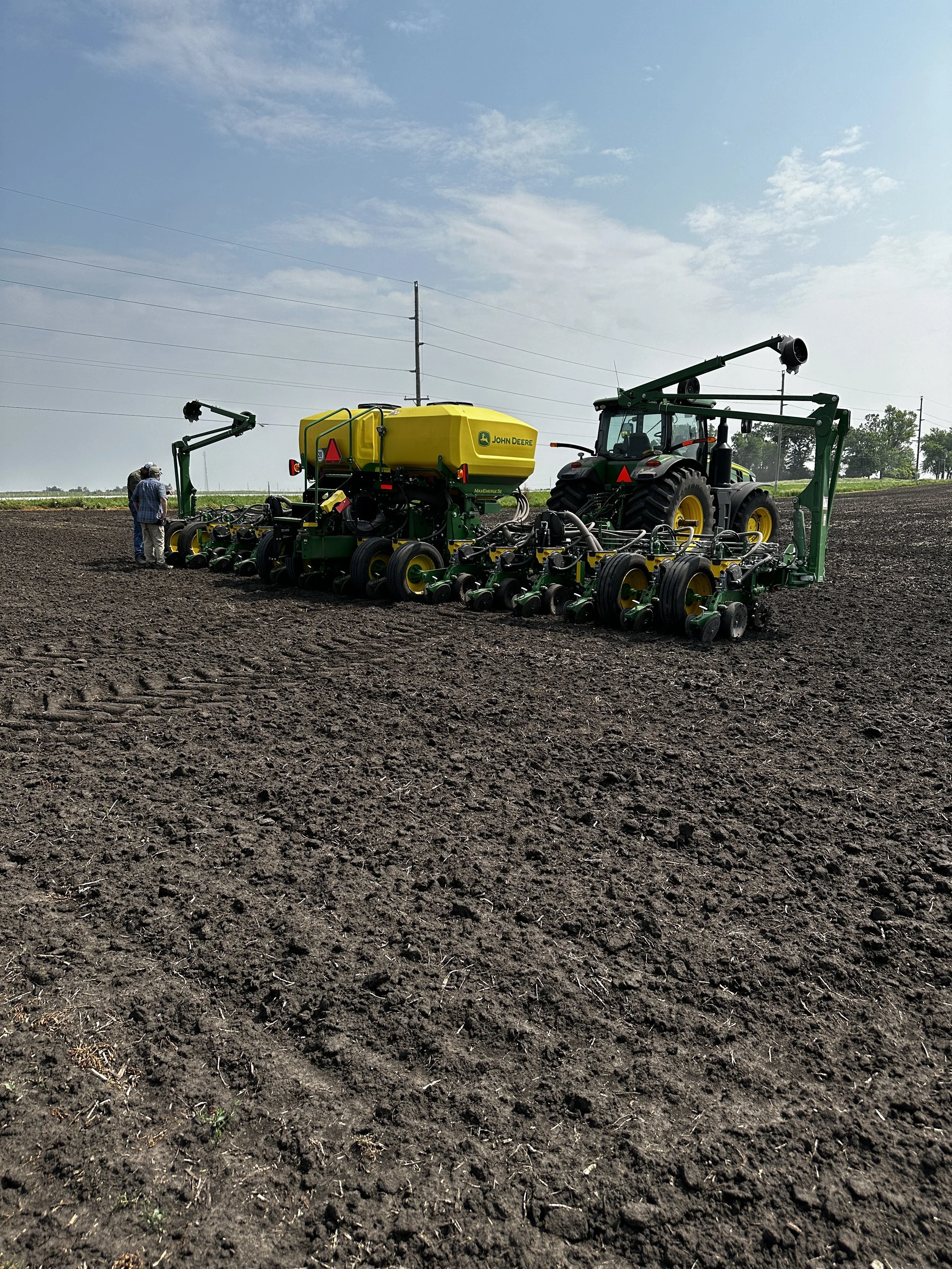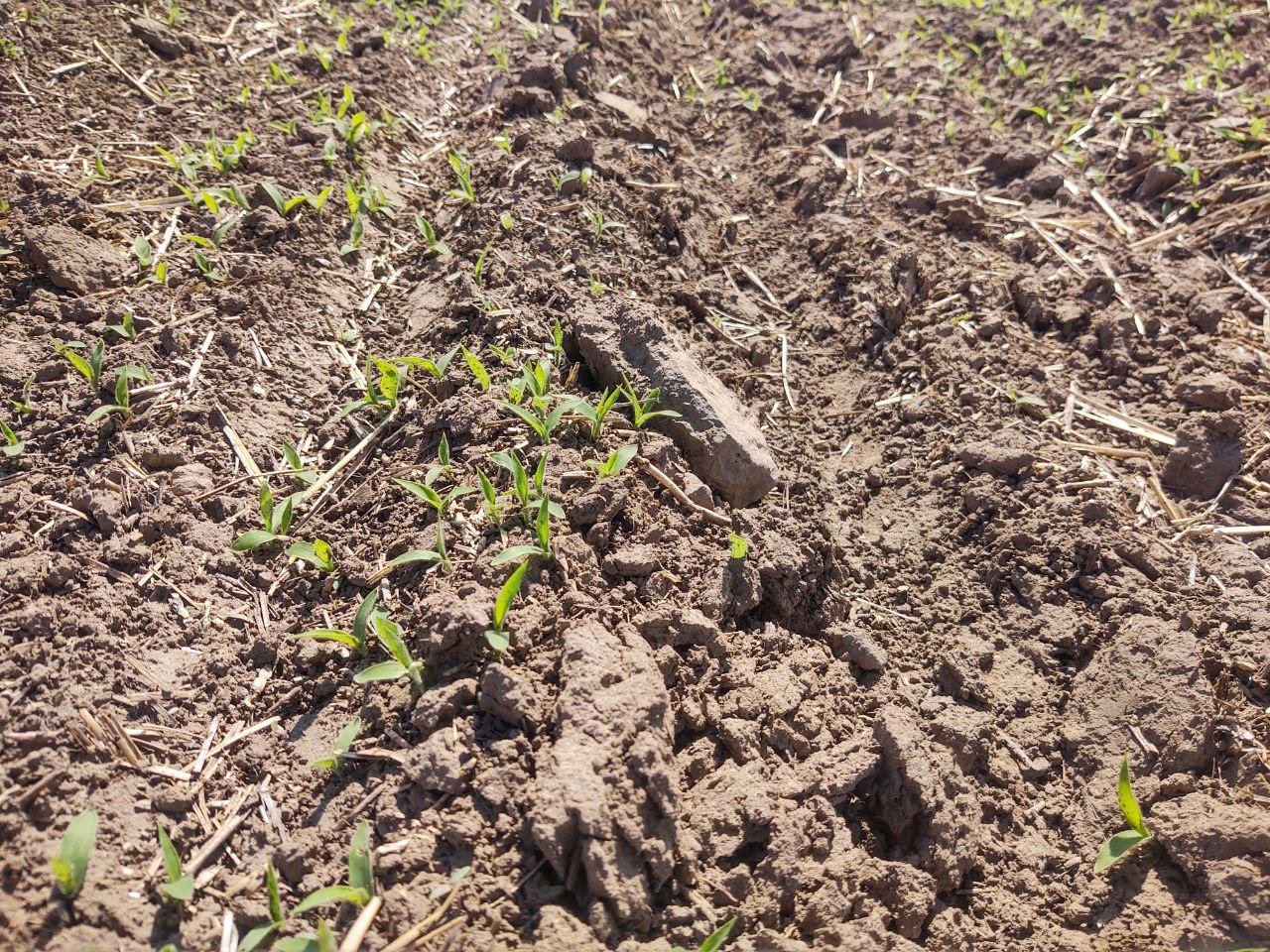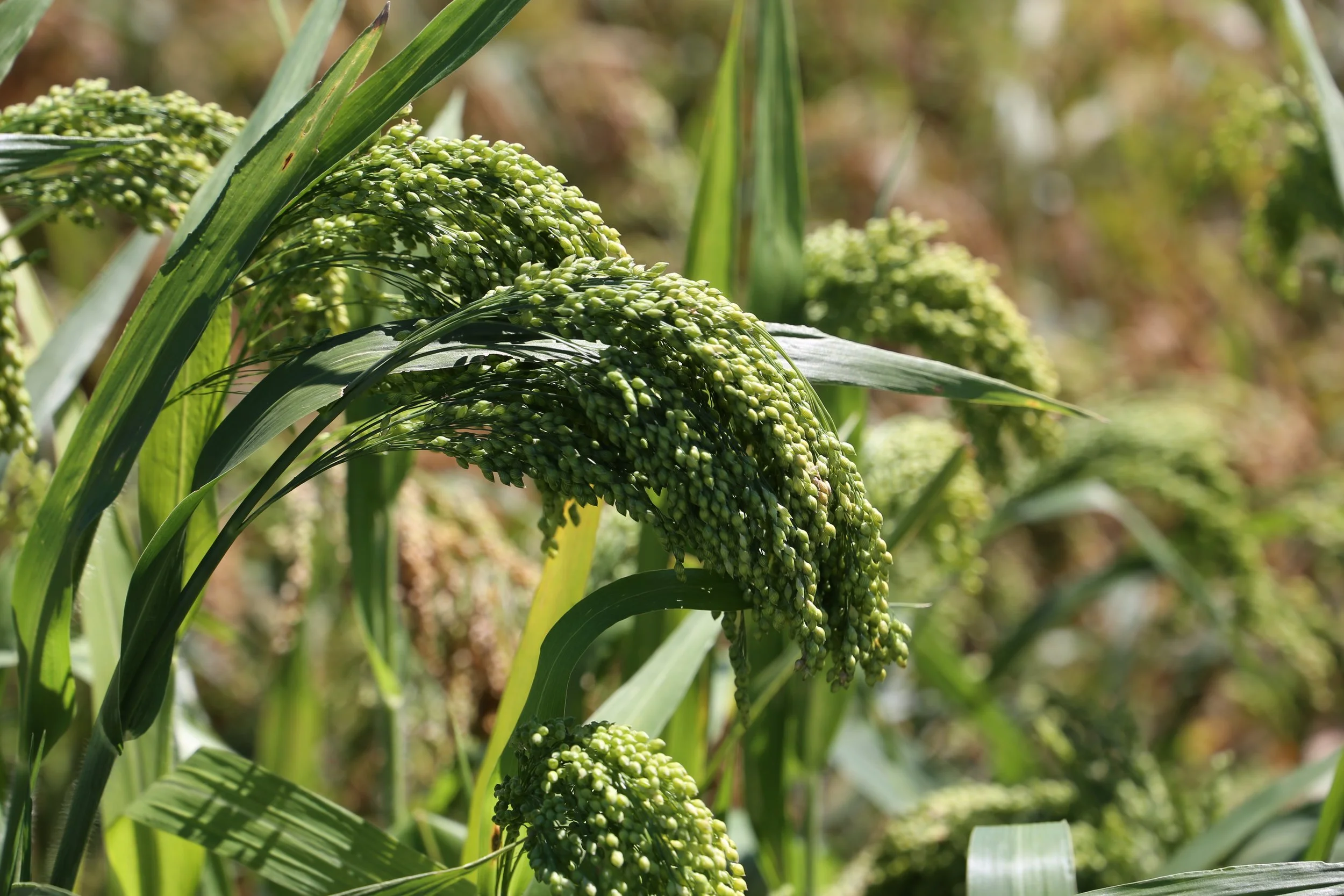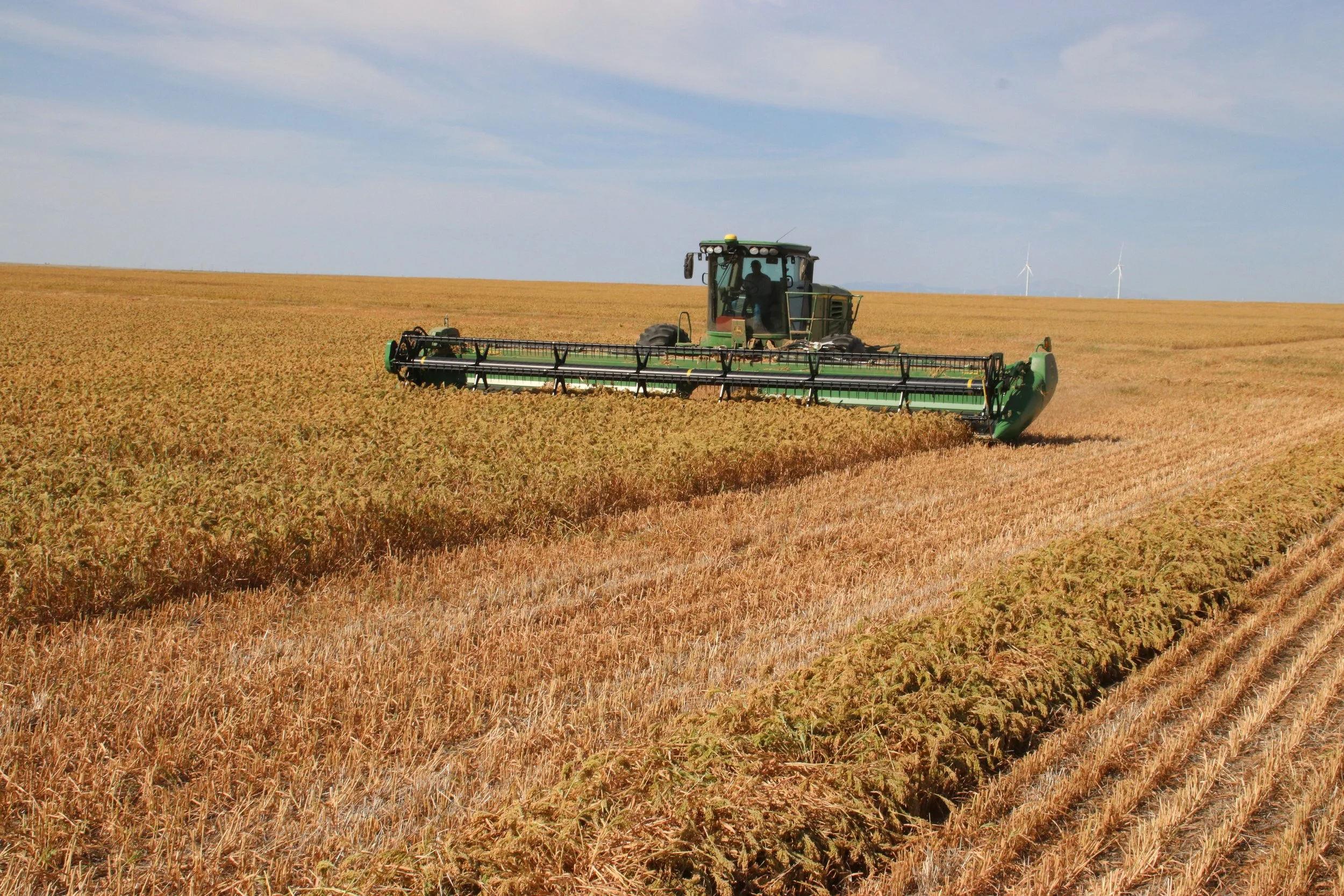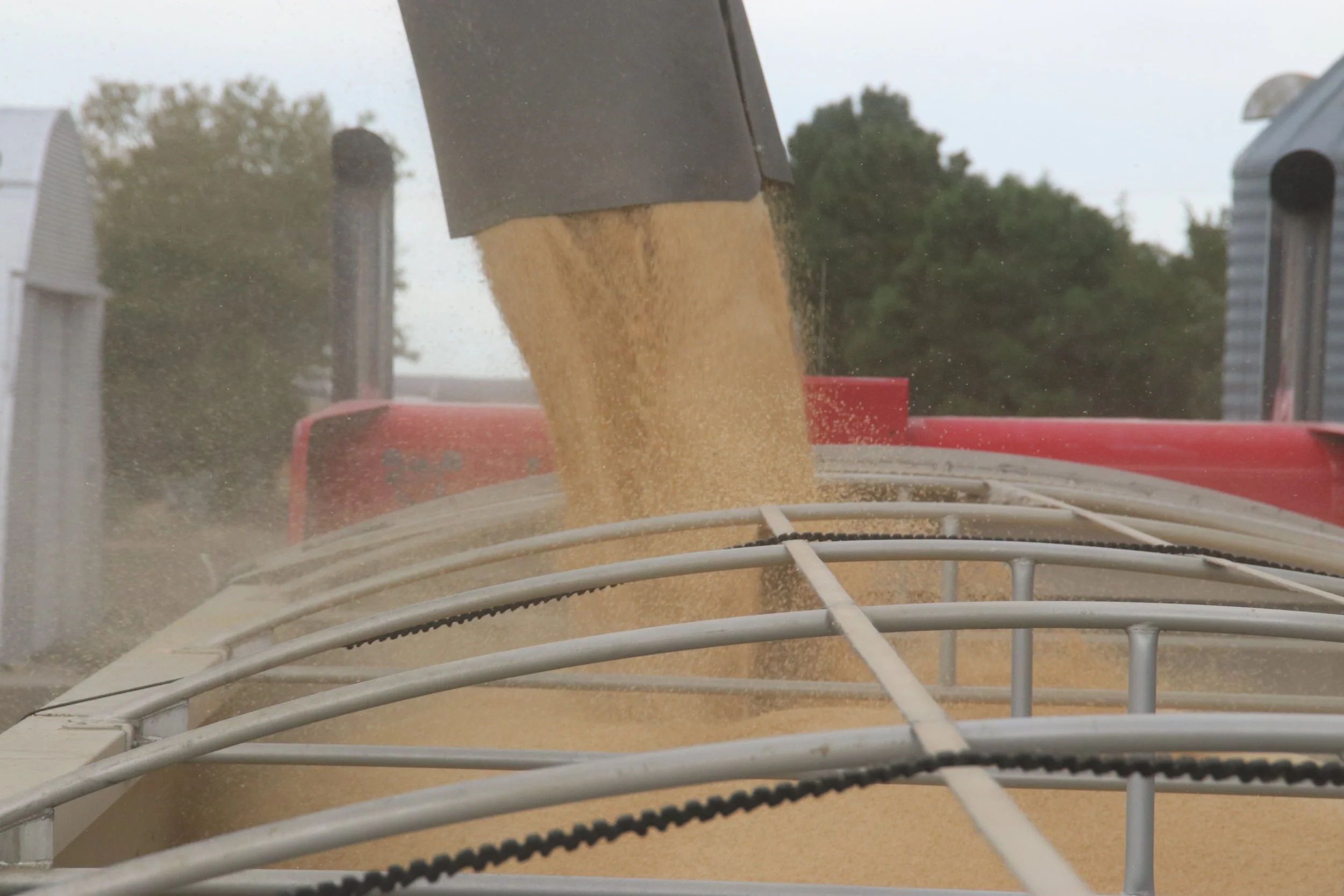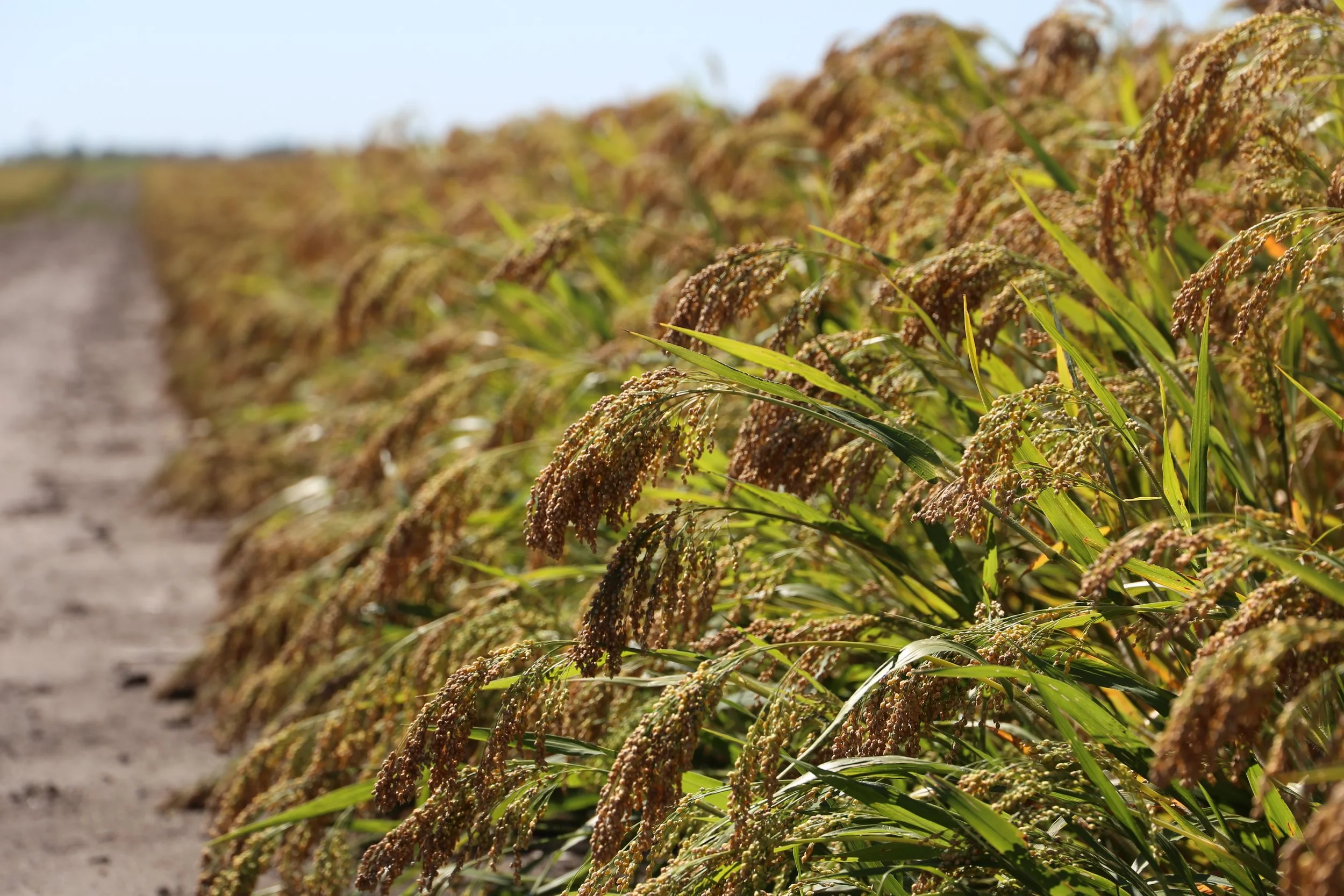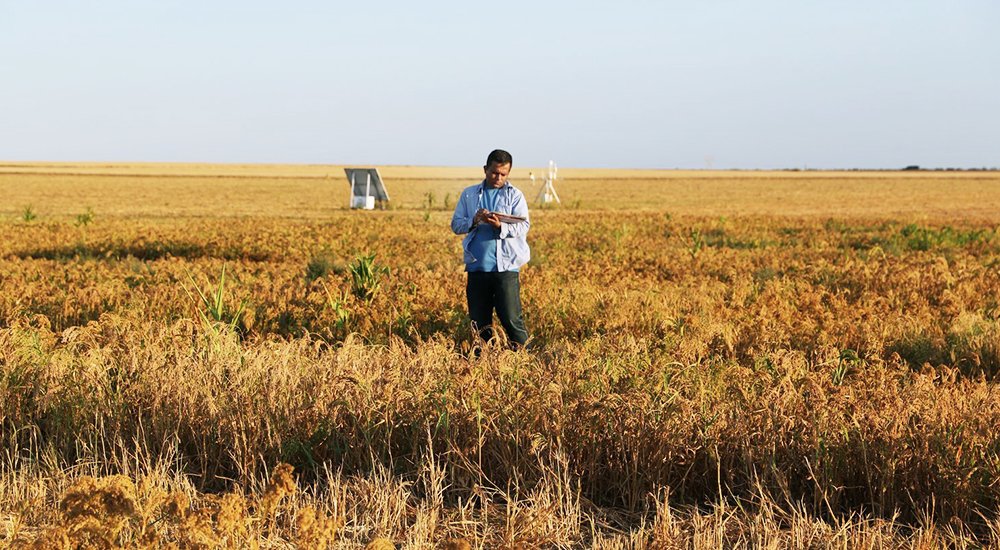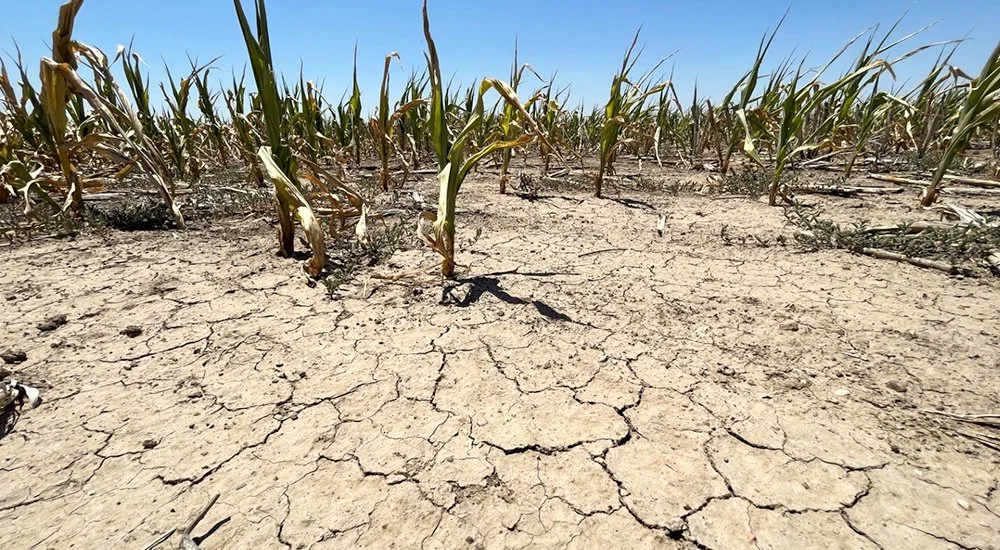Producing Proso Millet Across the Nation
Three growers across the nation tell their approach on planting proso millet this season.
Much like any other crop, topography and weather conditions can play a big role in determining the management practices that are put into place on various proso millet farming operations. Below, we will hear from growers all across the U.S. on their approach to planting proso millet this season.
From the Heartland
Jeff Taylor is a corn and soybean farmer in the Midwest, although he has been incorporating proso millet into his operation just outside of Ames, IA for the past few years. The results he’s seen are giving him a growing confidence in this crop’s ability to be profitable year after year.
Getting in the field.
This spring, Taylor first hit the fields with a pre-emerge burndown application of glyphosate and 2,4-D to terminate any weeds or grasses that may have developed in the early spring months.
After giving the treatment a few days to take effect on the weeds, he went in with his field cultivator to lightly work the ground. By doing this, he broke up the leftover bean stubble and created the perfect spot for his soon-to-be proso millet seeds.
This year Taylor experienced a drier spring, with thunderstorms here and there. Before planting, a decent thunderstorm came through, providing the much-needed moisture for these seeds to germinate once planted.
The rain delayed Taylor’s start to planting a few days, but he was still rolling into the fields to plant the first week of June! Through research and his own experience, Taylor knows planting proso as close to June 1 is the most ideal timeframe for this crop in central Iowa. Sunny, 90ºF and not a cloud in sight seemed to be the perfect day this year to get his proso seeds in the ground, and he didn’t skip a beat.
Taylor planted his proso fields with the same equipment he uses for his corn and soybeans. The only adjustment he needed to do was to switch out the corn and soybean plates in the planter, with some small-seeded canola plates better designed to pick up the small proso seeds, and off he went! Planting 30-inch rows with his John Deere planter, Taylor went ahead and completed a second pass of planting to tighten up the rows to 15-inches.
Having ideal moisture rates after the rainstorm helped these proso acres to begin emerging just 3-4 days after planting.
As the season progresses, be on the lookout for an update from Taylor on how his proso crop is performing this season!
From “Millet Country”
Jacob Wagers is no newcomer to proso millet. In fact, Jacob can’t remember a time when his family wasn’t producing proso millet (having started in the 1980’s). Jacob farms by Woodrow, Colorado, in what some may refer to as “Millet Country”.
Wagers grows around 5,000 acres of proso millet in a rotation with wheat, and in addition to corn. This region of Colorado is generally flat with rolling hills, and has become especially popular for growing proso millet for the past three years due to lack of rainfall.
In efforts to build up moisture within the soil for other crops to continue to grow, many farmers in this region let their fields go fallow for a year to provide rest for the land. This practice involves not planting any crops for a year, then waiting until spring or summer the following year to plant the first crop–like proso millet. That crop is then harvested in early fall, and a second plant is planted for the fall and winter–such as winter wheat. This gives the ground enough time to absorb and retain available water for a year and produce more water-dependent crops like wheat. By planting proso millet first, farmers get the benefit of a second crop in the same field, but the shallow root system leaves much-needed moisture in the ground for the following crop.
Getting into the field.
Prior to planting this season, Wagers applied nitrogen fertilizer, followed by a pre-emerge herbicide application in late February-early March to kill off kochia weeds. In efforts to terminate any grasses, stickers and chamber bitter weeds, a glyphosate application was applied again in May, prior to planting.
Wagers shared the importance of terminating any weeds and grasses in the field prior to planting to reduce competition for both water and nutrients between the various plants in the field.
Once the weeds are terminated and the growing conditions are ideal - it’s time to get planting. Wagers planted his proso acres using his wheat drill at ½ -inch deep with 10-inch spacing. At this rate, he planted around fifteen pounds of proso millet per acre.
Storm’s a brewin’
A few days after Wagers finished planting his proso millet acres, a heavy rainstorm hit millet country, providing over four inches of rainfall! But along with the rain came hail. To ensure the crop emergence was thorough, Jacob went in and re-drilled some proso seeds where areas of hail were heavy from the storm.
Since this thunderstorm, Wagers has received as-needed rainfall and the overall growing conditions have been wetter and cooler than years past. That didn’t stop proso from popping up out of the ground just 4-7 days after planting!
Wagers is interested in seeing how this year's crop performs with the cooler and wetter conditions. Stay tuned as we check back in later this season for an update from him!
From the Pacific Northwest
Coming to you from eastern Washington state, Jason Bishop has had quite the luck this year with his proso millet crop. Having experience growing barley, wheat and canola, he recently decided to try his hand at producing proso millet. And from his first experience has been quite positive.
Though he has grown proso millet in years past as a cover crop, this is Bishop’s first year growing this sustainable grain as a cash crop. Through his connections at Washington State University, he was able to test out producing proso millet through a recent grant that was awarded to help build a more diverse crop market in the Pacific Northwest (PNW).
Receiving typically around 12-13 inches per year in the PNW is ideal for producing proso millet. This region is dryland, which means that they receive most of their annual rainfall in the winter months (November through May) and are dry through the growing season (June through October). One of the biggest surprises for Bishop was proso millet’s ability to produce a crop given the minimal rain his area receives throughout the growing season.
Getting in the field.
Before planting this season, Bishop applied a round of glyphosate prior to planting to kill off any weeds that may be starting to form. After this, he was ready to hit the fields around Memorial Day (late May) for planting.
Due to the topography and soil types within the Pacific Northwest, Bishop drilled his proso millet seeds at ¾ inch deep in 10-inch row spacing with the same drilling equipment used for planting his barley, wheat and canola fields. At this rate, he planted around twenty pounds of proso millet per acre.
This year, he planted his proso a little earlier than years past with the hope of harvesting his crop a little earlier and to provide a larger window to plant his winter wheat following proso harvest. There was a little gamble with Mother Nature here, as the PNW can sometimes receive a late frost in early June. Fortunately, this wasn’t the case this year, and he saw his fields start to emerge in less than 10 days after planting.
What’s with the weather?
After planting his proso acres this year, there was a small thunderstorm spell that passed, providing an inch of rain to help the seeds begin to germinate. Since then, eastern Washington hasn’t received much more moisture. He hasn’t seen any impact on his crop, and is eager to see how it performs as the season progresses.
Stay tuned for the mid-season and post-harvest updates from these growers. Click here to stay up to date with our most recent blogs.



